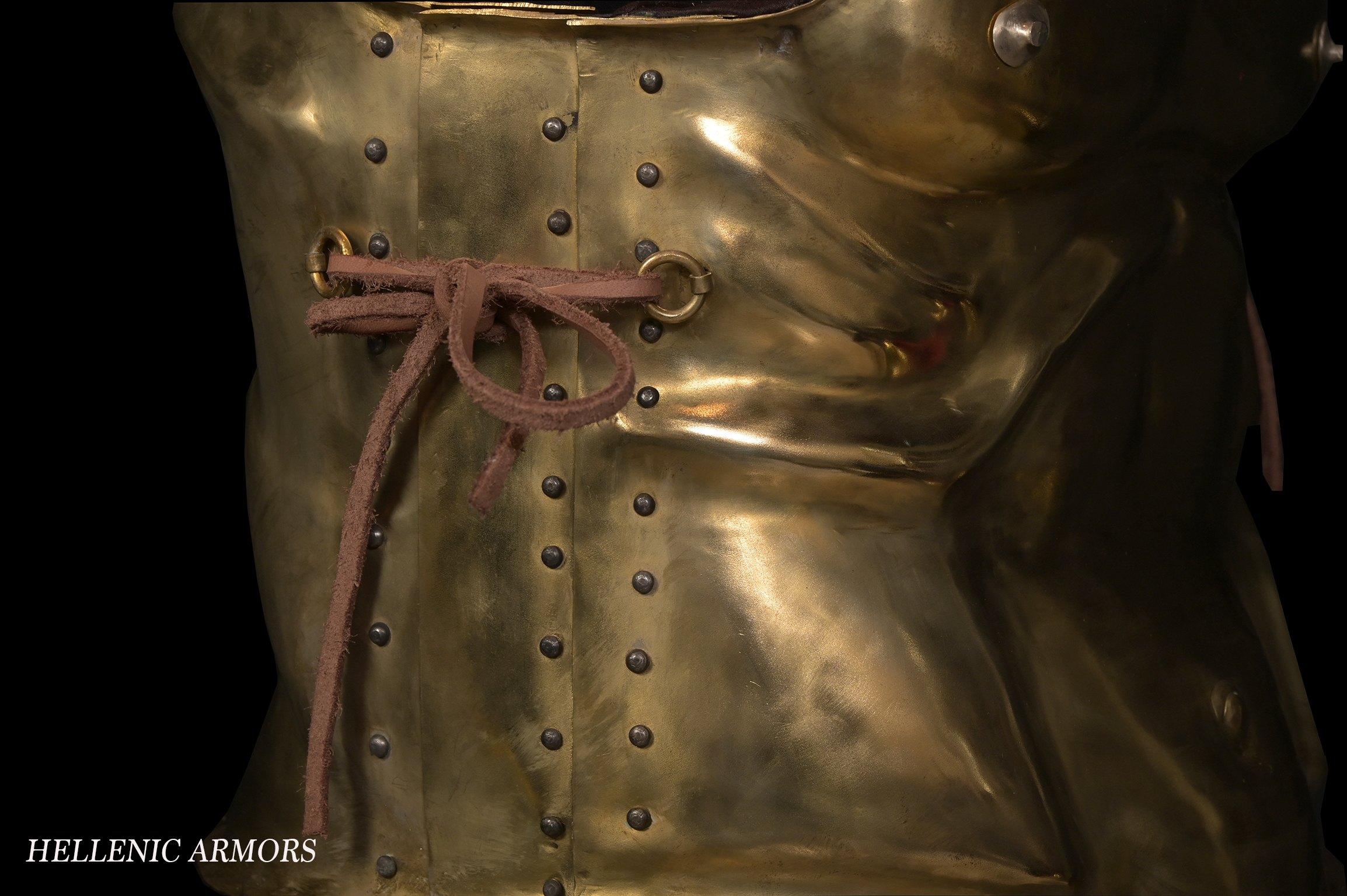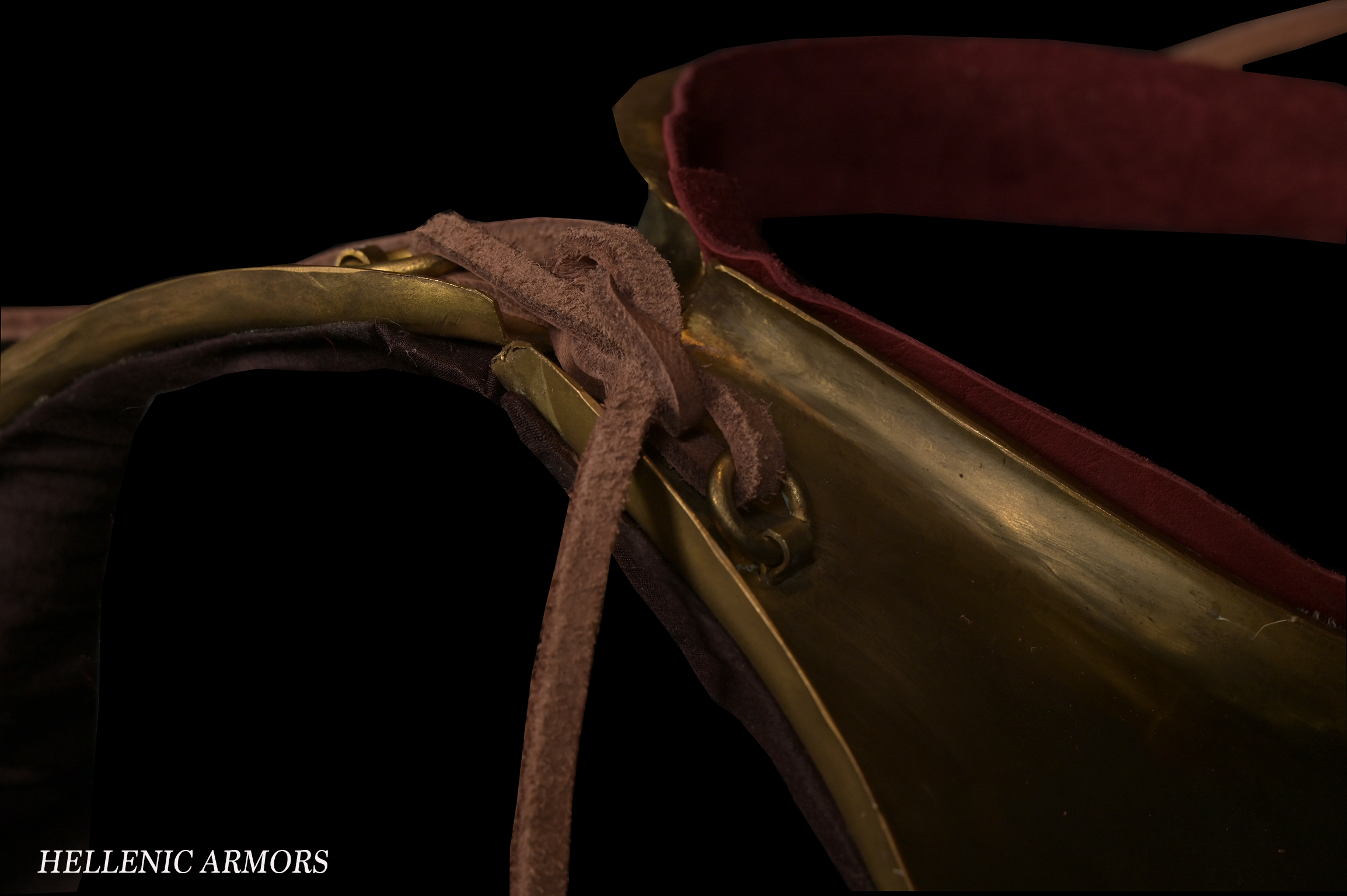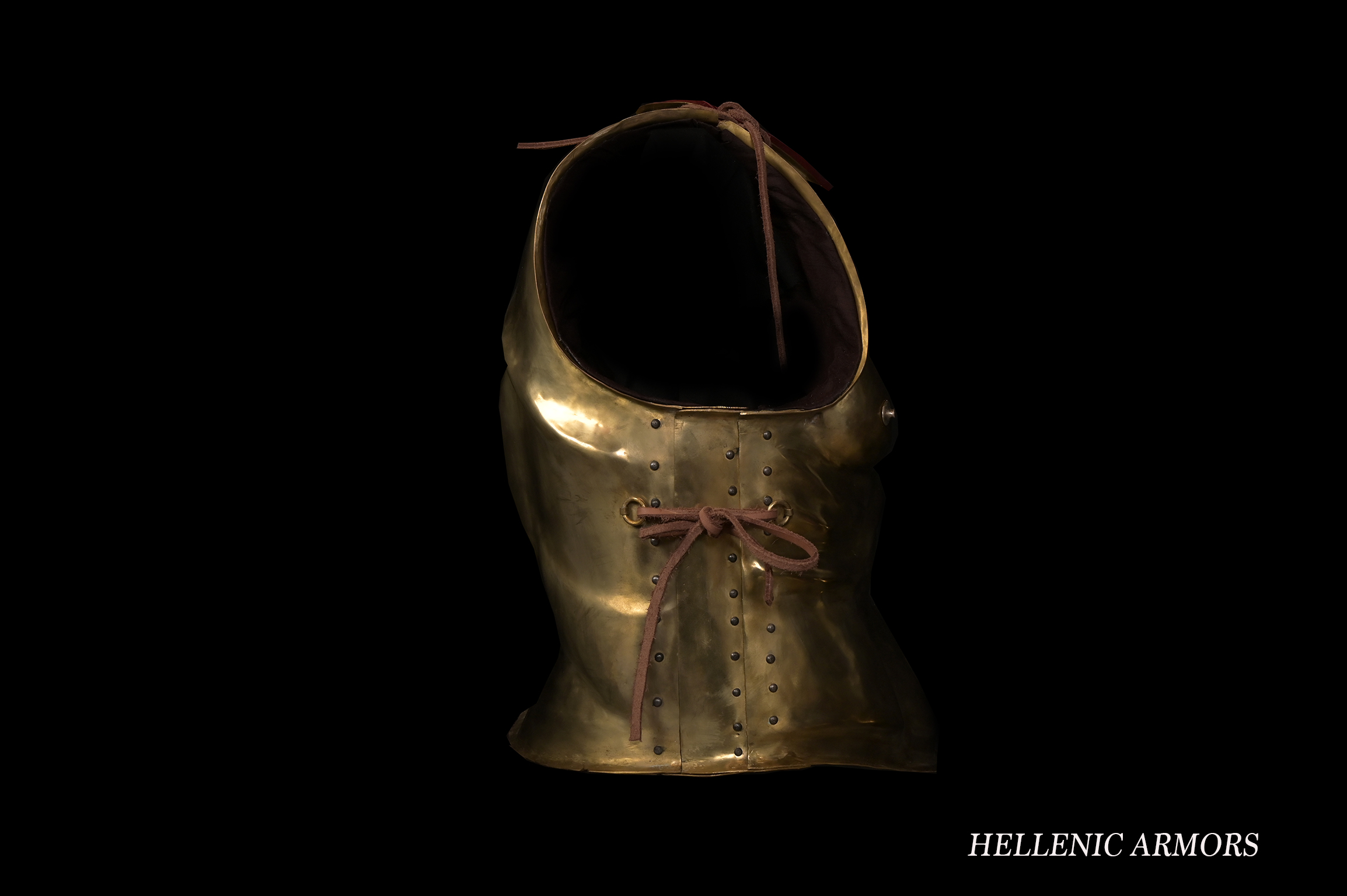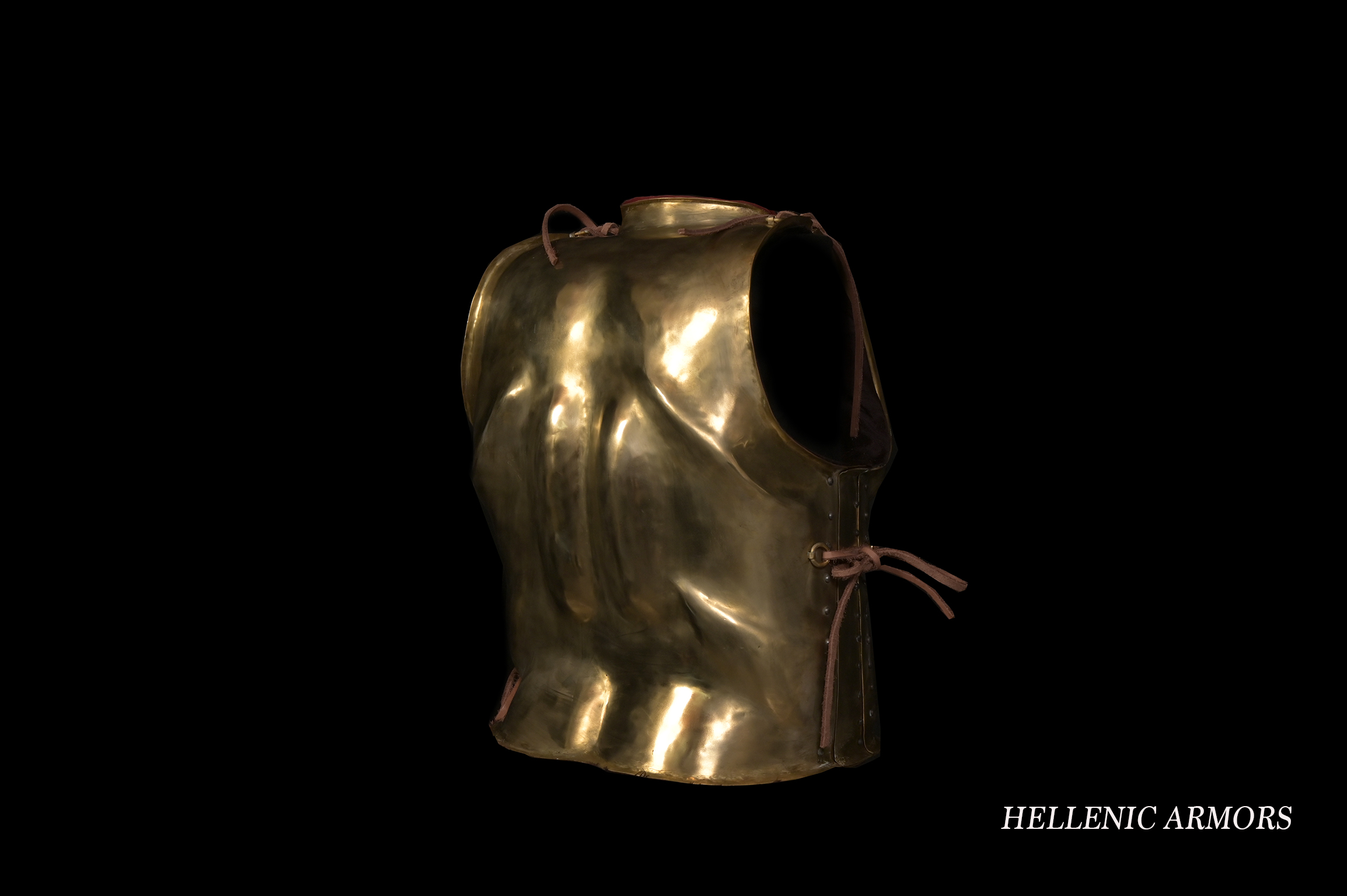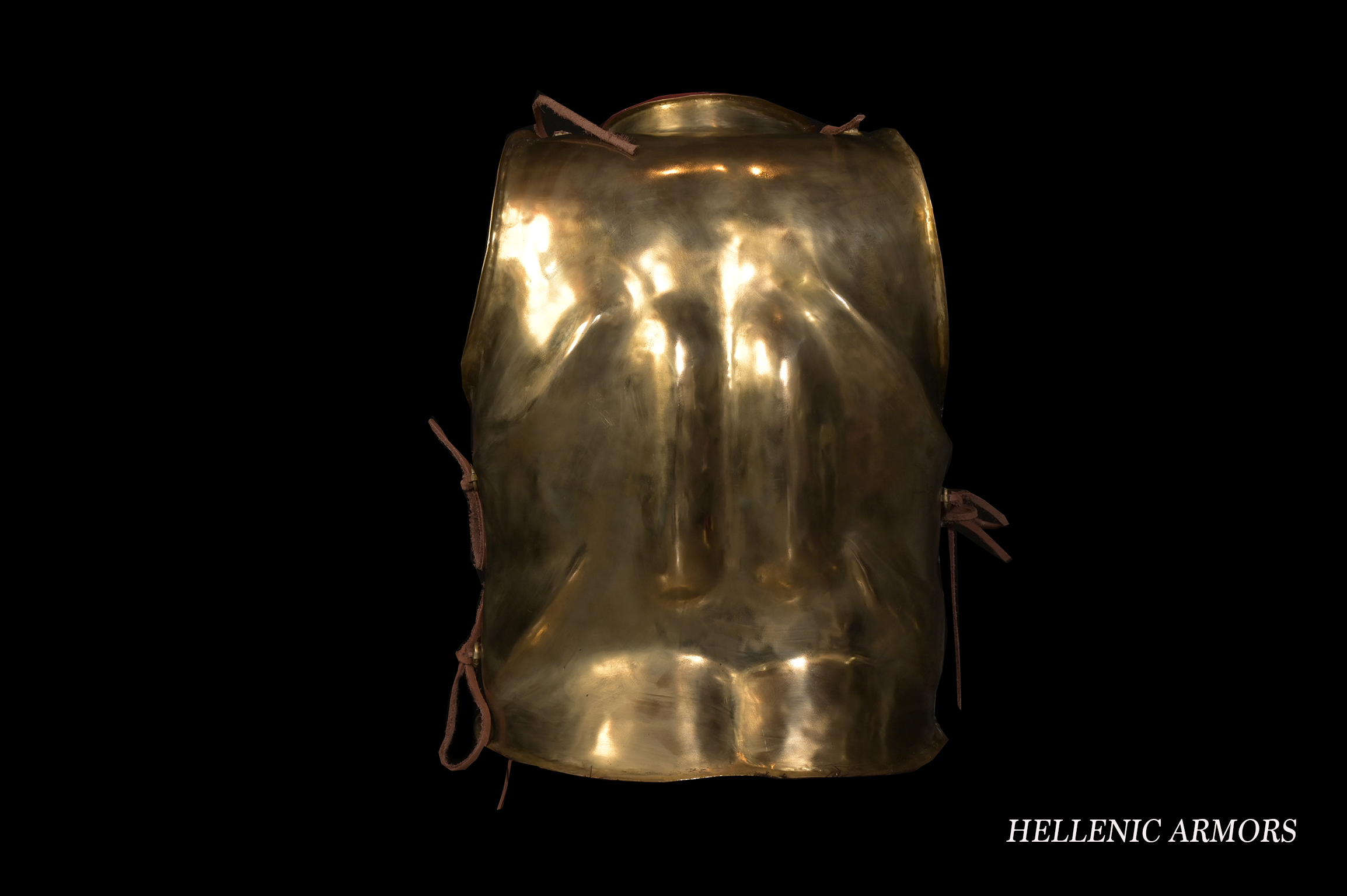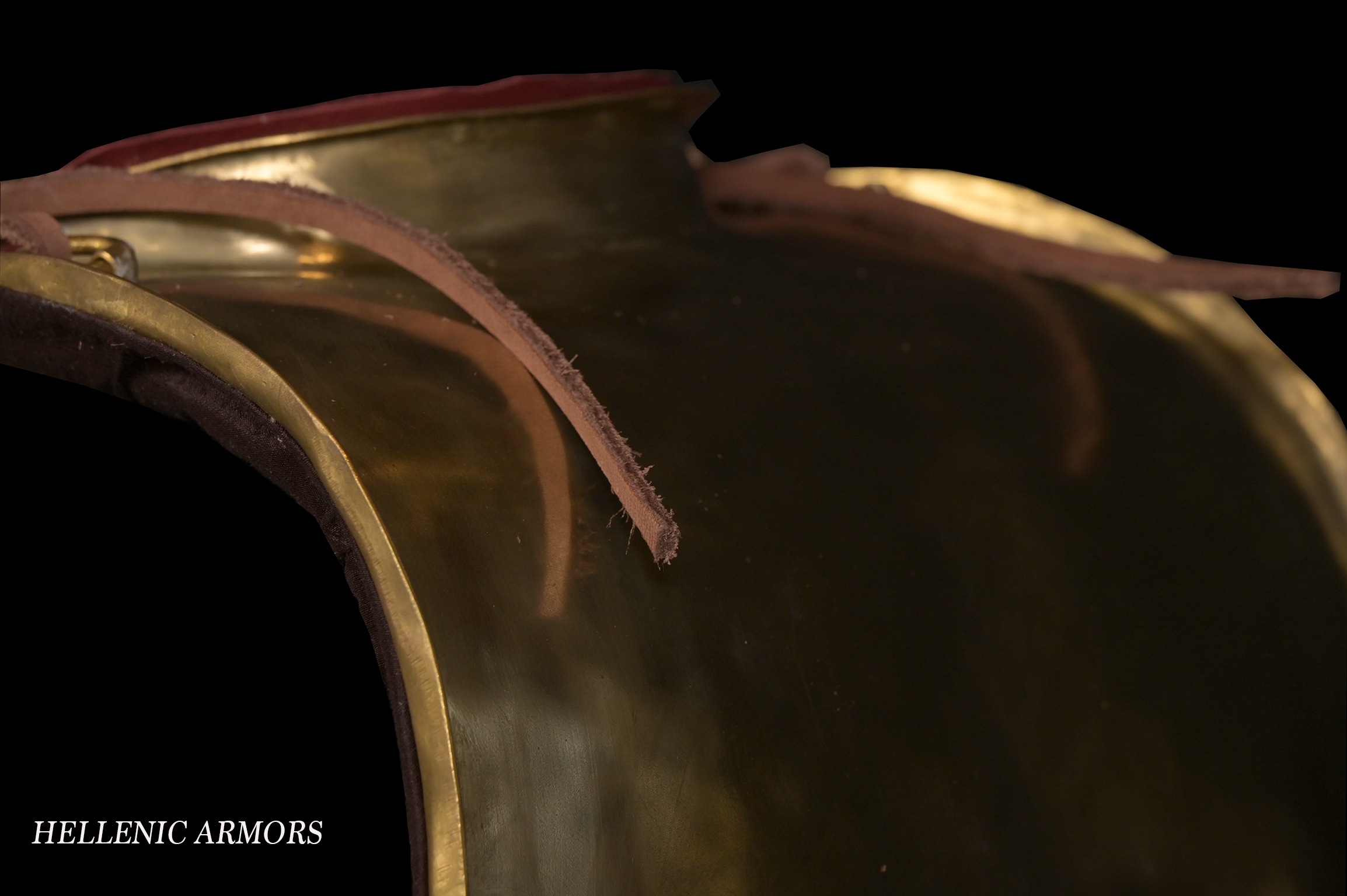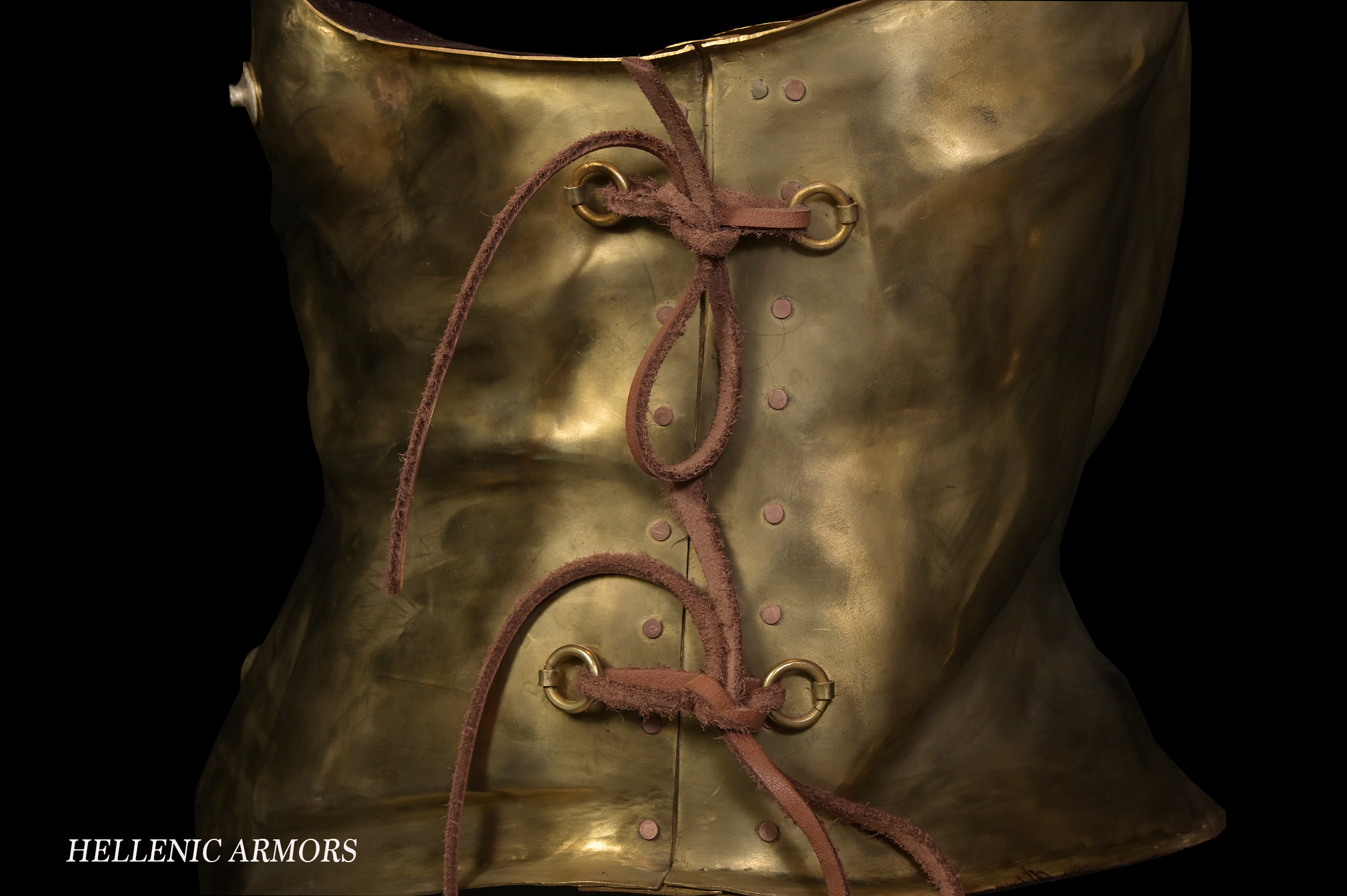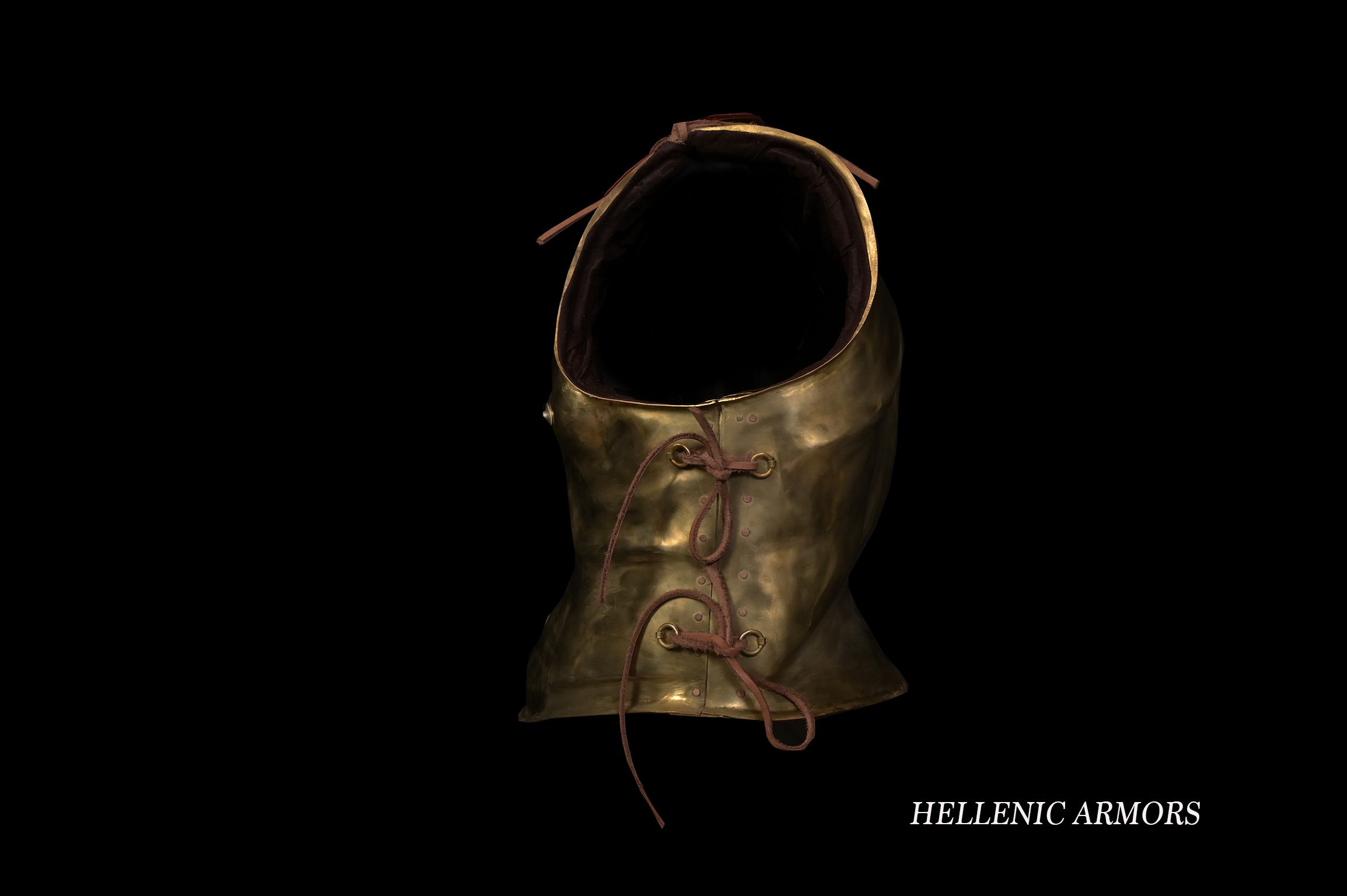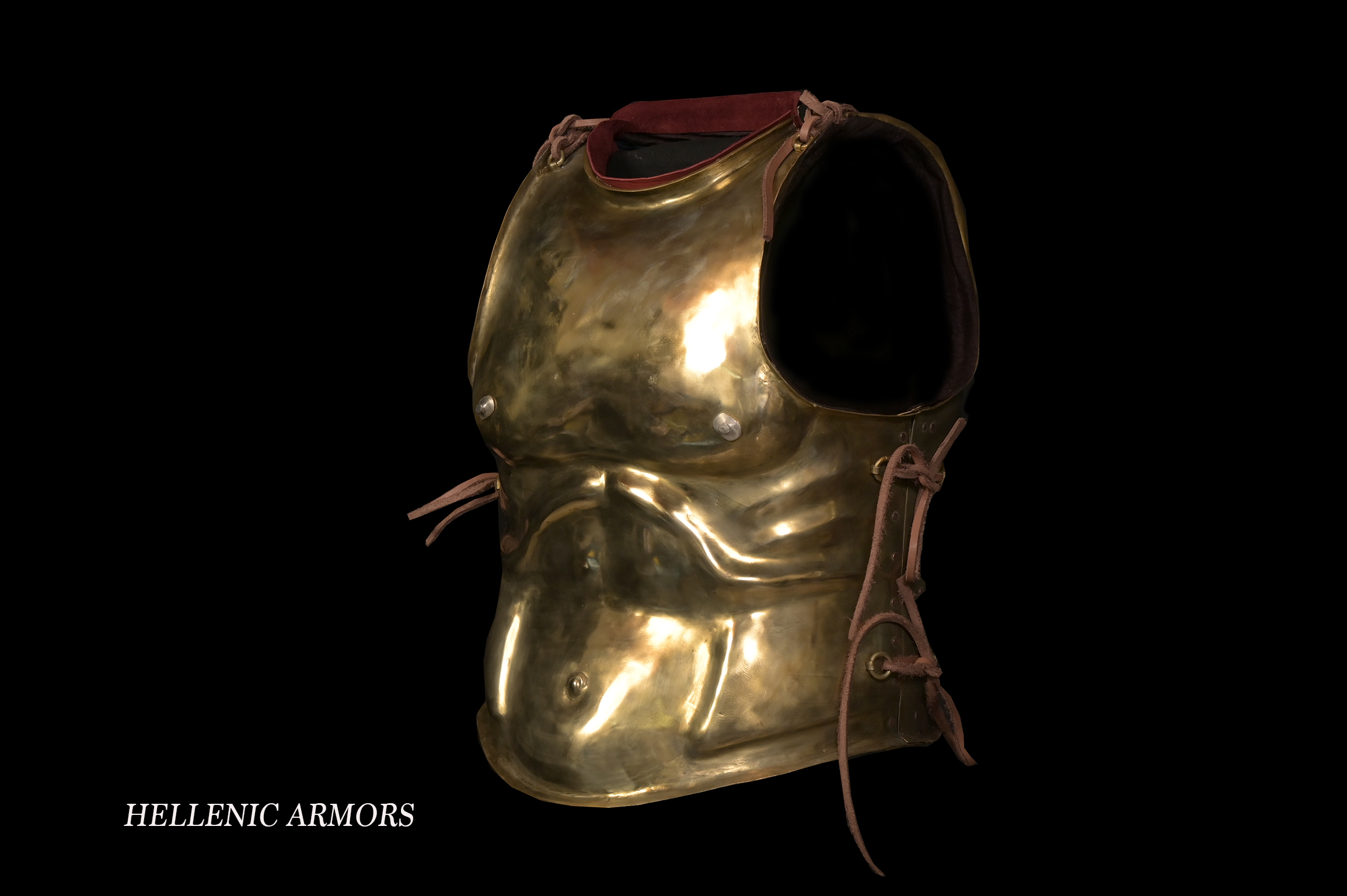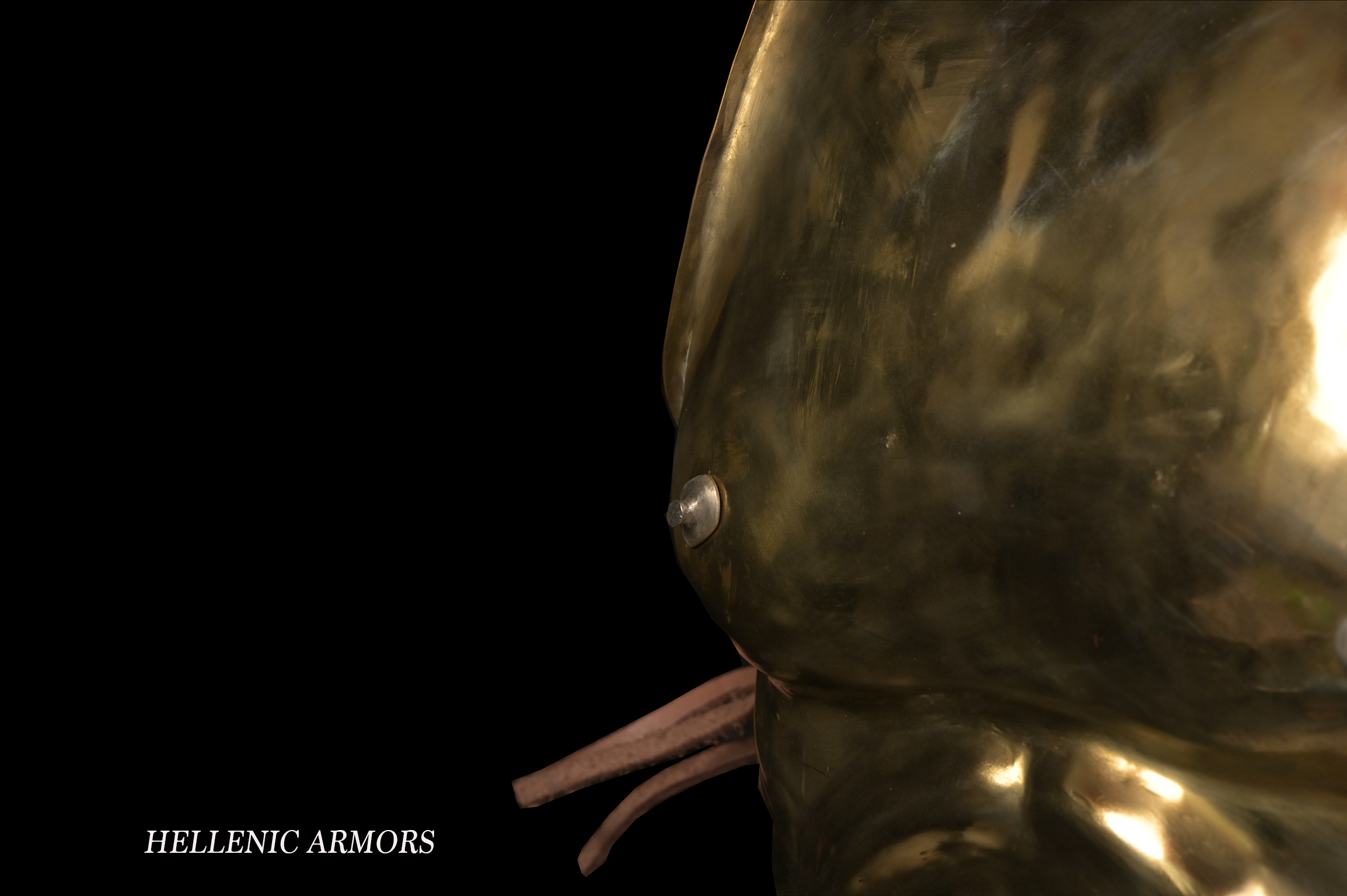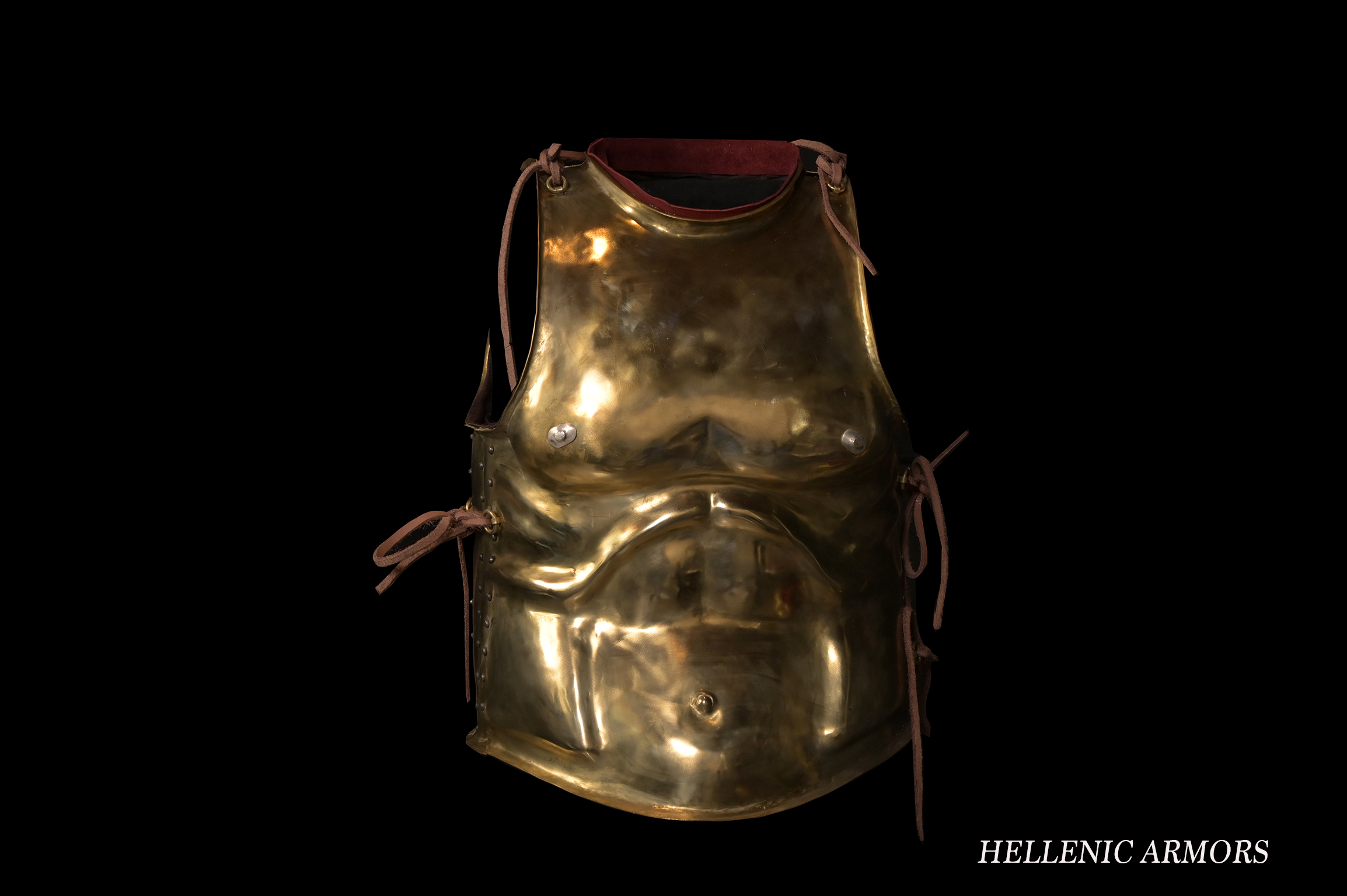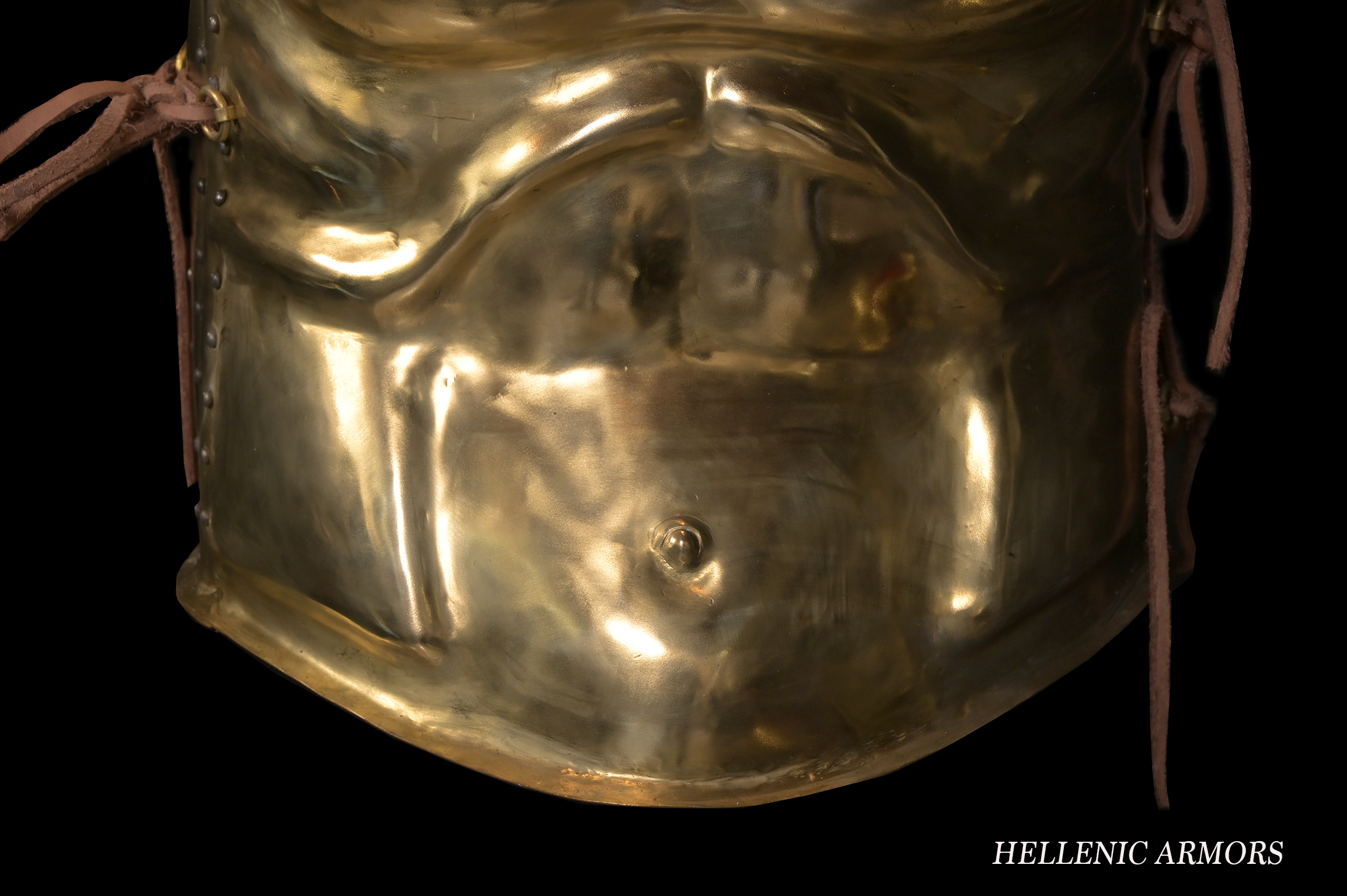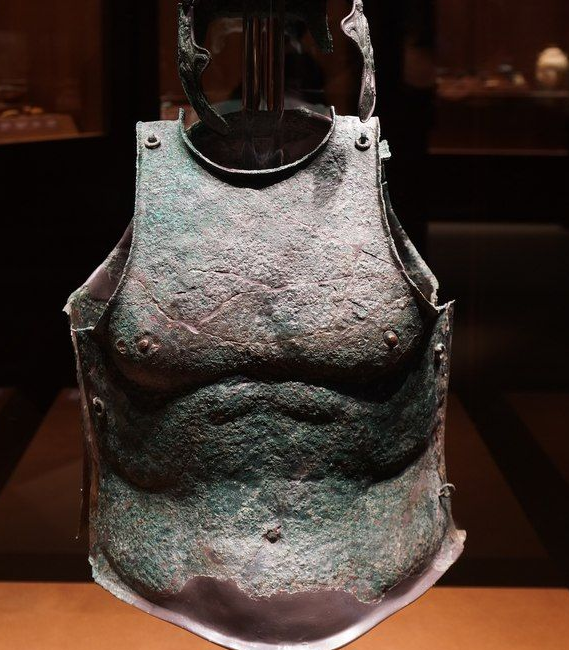Ancient Greek Armors
Μuscle cuirass of Cortona
4th century BC (South Italy)
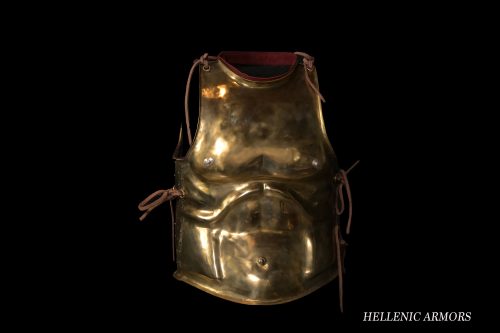
he archaeological find is being displayed at the Archaeological Museum of Florence (Museo Archeologico Nazionale of Florence), it was found in the Cortona area (south of Florence) and dates to the 4th century BC. It certainly originated from a Greek workshop in Southern Ιtaly since it presents all these technical characteristics of Greek school of armoring as far as technique and aesthetics are concerned.
The two halves are anatomically shaped with a naturalistic rendering of the muscles of the chest, abdominal, etc. A particular technical feature of the torso is the way of its assembly, specifically the vertical lateral sides are joined together with pairs of ring-lace fastening mechanisms without hinges. Despite the fact that the resolution of the available photographs is not very clear and an in-situ inspection would have been very helpful, the joint must be achieved with close-fitting devices where one wall touches the other with absolute precision and is stabilized with the help of a loop-lace system.Two pairs of rings have been used for the shoulder area fastening.
The inner surfaces have been covered with thick woolen and fabric (linen) lining. The nipples are inlaid with silver. The edges of the sheets have an outward extension-turn.he archaeological find is being displayed at the Archaeological Museum of Florence (Museo Archeologico Nazionale of Florence), it was found in the Cortona area (south of Florence) and dates to the 4th century BC. It certainly originated from a Greek workshop in Southern Ιtaly since it presents all these technical characteristics of Greek school of armoring as far as technique and aesthetics are concerned.
The two halves are anatomically shaped with a naturalistic rendering of the muscles of the chest, abdominal, etc. A particular technical feature of the torso is the way of its assembly, specifically the vertical lateral sides are joined together with pairs of ring-lace fastening mechanisms without hinges. Despite the fact that the resolution of the available photographs is not very clear and an in-situ inspection would have been very helpful, the joint must be achieved with close-fitting devices where one wall touches the other with absolute precision and is stabilized with the help of a loop-lace system.Two pairs of rings have been used for the shoulder area fastening.
The inner surfaces have been covered with thick woolen and fabric (linen) lining. The nipples are inlaid with silver. The edges of the sheets have an outward extension-turn.
